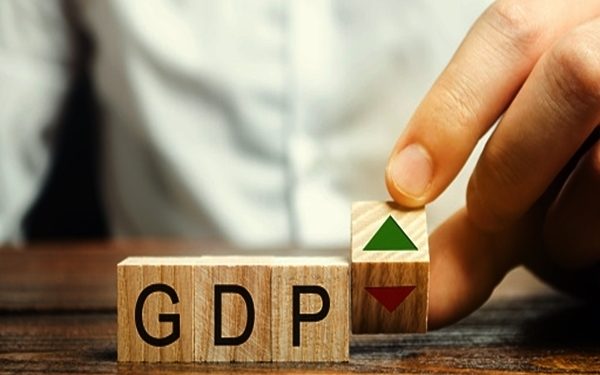Kolkata: Chief Economic Adviser V Anantha Nageswaran Saturday said that the government is on the same page with the RBI on India’s GDP growth forecast for the current financial year which is 6.5 per cent.
RBI Governor Shaktikanta Das announced at the end of the monetary policy committee (MPC) meeting Thursday that India’s GDP growth forecast for 2023-24 has been pegged at 6.5 per cent, a tad higher than the April forecast of 6.4 per cent.
Speaking at a session organised by Bharat Chamber of Commerce here, Nageswaran said, “Both the ministry of finance and the RBI are on the same page with the growth forecast for the current fiscal which is 6.5 per cent with risks evenly balanced. The domestic economic growth momentum is strong enough to overcome external risk factors”.
“We also benefit from lower oil prices and overall domestic macroeconomic stability,” he said.
The CEA said that during the last financial year, real GDP growth was 7.2 per cent, which was lower than the 9.1 per cent registered in the previous fiscal.
“However, I feel that the growth for the last fiscal will be much higher than 7.2 per cent,” Nageswaran said.
The CEA to the government said that India was the fastest growing among major economies with all high-frequency parameters for April signalling a good start during the first quarter of the current fiscal.
“With exports of goods and services as a percentage of GDP pegged at 23.5 per cent during the last financial year, the highest since 2015, private consumption and gross capital formation had increased in the last financial year after the pandemic.
“Private consumption has been mainly driven by urban consumption, contributed largely by the release of pent-up demand,” he said.
Speaking sectorally, Nageswaran said on agriculture that though there are concerns about the El Nino effect, the water reservoir storage is adequate in the country and enough availability of seeds and fertiliser stock is comfortable.
On industry, he said that there are signals of capacity expansion taking place, uptick in construction activity as well as in cement and steel production.
Also read: CEA against concept of Universal Social Security as it may generate ‘perverse incentives’
Alongside, the services sector is also growing with foreign tourist arrivals coming back to the pre-pandemic level and the hotel industry witnessing robust growth. There are also early signs of rural demand recovery, he added.
Nageswaran said with the strengthened balance sheets of the banking and corporate sectors, more investments will take place in the economy leading to growth in income and creation of employment.
According to him, since India did not splurge fiscally during the pandemic but tailored schemes targetting the beneficiaries, the fiscal situation of the country remained better. Also, the current account deficit (CAD) as a percentage of GDP will be lower in the current fiscal, and foreign exchange reserves are sufficient to cover 10 months of imports.
Raman Chopra, joint secretary, the Central Board of Direct Taxes (CBDT), said that the government policy is to focus on revenue collection, with a thrust on ease of doing business (EoDB).
He said the government has been successful in registering the highest levels of buoyancy in revenue collection. There is also an emphasis on voluntary compliance.
Chopra said the new concept of updated return introduced recently will lead to less litigation while resulting in growth in revenue.
“Despite tax rates being reduced, revenue has increased which is due to voluntary compliance”, he added.
PTI






































